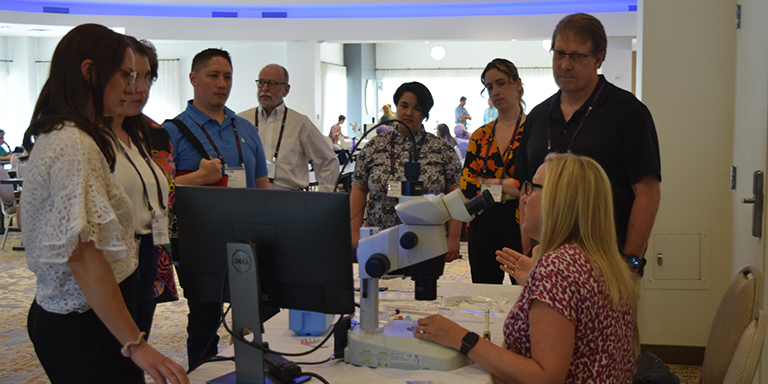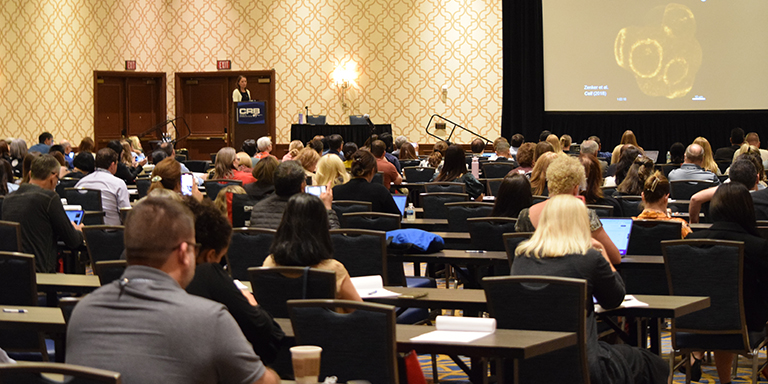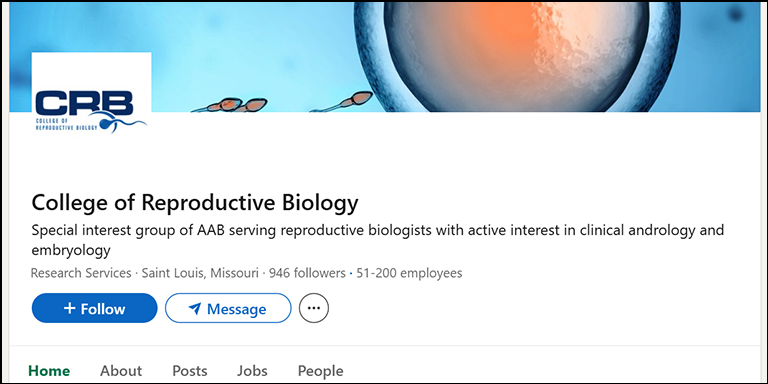
Newsletter
The College of Reproductive Biology (CRB) is a not-for-profit special interest group of the American Association of Bioanalysts (AAB).
The Importance of the ‘Hows’ and ‘Whys’ in Assisted Reproduction
By Samuel Prien, Ph.D., HCLD(ABB)
As embryologists, we work in one of the most scientifically advanced and quickly evolving areas of medical treatment. But has it always been that way? The simple answer is no. While early embryology definitely had scientific roots, early clinical embryology and IVF suffered from the rush to simply obtain pregnancies at almost any cost. A program would announce a pregnancy, and others would quickly switch everything they could to mimic that success, what I like to refer to as an ‘N of one’ science. So that, a decade after the first IVF birth, success rates were estimated at a mere 7%.
It was not until both clinics and labs began a more systematic and scientific approach that pregnancy rates began to rise, jumping from levels reported as low as 6% to approximately 17% in just a few years1,2. So, what changed? We began to ask the two most important questions in all of science, HOW and WHY? Knowing what steps in our processes work is the HOW of the equation. Then the more important question becomes, WHY do they work that way? By asking both these questions, we can find answers that have changed our world and taken IVF/ART out of the realm of a relatively unproven experimental procedure to the mainstay of infertility treatment currently resulting in approximately 2% of the birthrate reported in the U.S.3 Now that we understand parts of the WHY it works, we can begin to ask the harder HOW questions. HOW can we improve it?
With each new WHY answered we have seen a jump in success rates. Each new WHY answered has also led to experiments which have asked HOW can we take this new information and improve what we do even more.
But how does this discussion affect the day-to-day operations of a clinical embryology lab? It should be obvious that the HOWs are extremely important. What culture system is to be used? What are our tolerances? When do we perform certain tasks such as stripping, insemination, biopsy, and cryopreservation? These are all procedural HOW questions and with them we have created manuals which we follow religiously every day. These are the heart and soul of our regulatory accreditations and, quite frankly, the things that those in charge want to know are working and only want changed when it can be done cheaper, faster, or with fewer personnel. And that is fine, as long as the system works.
However, while the HOWs are important to make sure everything should go well, the WHYs are also important to the clinical lab. Not only do they lead to improvement, the WHYs are your best friend when things go wrong. Understanding the WHYs is really nothing more or less than understanding the basic physiology and biochemistry of embryo biology. When things change in the laboratory and fertilization, blastocyst formation, or pregnancy rates drop, our first step should be to review the HOWs. However, if we review the HOWs and cannot find the answers, it will be the changes we see in the embryo itself-its physiology-that suggest the answers. The ability to first recognize and then determine the WHYs for subtle changes in growth rates, embryo granularity, fragmentation, …etc. make these highly trained individuals invaluable in the trouble-shooting process.
Many have said these are the nuances that artificial intelligence will bring to the ART lab. However, I believe, at least in the beginning, AI will be much more useful on the HOW side of ART. AI is dependent on how it is trained. Routine tasks appear to be its forte because routine tasks occur in large numbers, making the inferences drawn more and more reliable. But biology is full of examples of natural variation. Some variations have little to no effect on what we do and, therefore, would create noise in an AI model. But the discerning embryologist, with an understanding of both the HOWs and WHYs would be able to pick up on the subtle changes earlier than either AI or someone only trained in the HOWs of ART.
A simple analogy. Anyone should be able to bake a cake following the directions on the back of the box (well almost anyone). But it takes a true Master Baker to take the individual ingredients with no instructions and make an even better cake. In the same way, what separates an embryologist with technical skills from the embryologist who was only trained to strictly follow protocol, is their understanding of the physiological and biochemical WHYs of what we do.
As clinical embryology continues to evolve and mature, several things are very clear. More and more clinics and labs will ultimately be managed by those worrying to cut costs and improve efficiency. In the lab more and more manual embryology procedures will be replaced by technology which will make it faster, simpler, and potentially performed by those who understand only the HOWs on a day-to-day basis. However, do not miss the opportunity to learn the WHYs. At least for the next few decades (if not longer), AI must learn what it is to be a biological organism. We currently only have limited information to give it to complete that task. Therefore, the lab will continue to rely on those who can explain the WHYs, the physiology, and biochemistry to ensure everything continues to run right and to react appropriately when things go wrong.
By Samuel Prien, PhD, HCLD(ABB)
References
- Jain T, Grainger DA, Ball GD, Gibbons WE, Rebar RW, Robins JC, Leach RE. 30 years of data: impact of the United States in vitro fertilization data registry on advancing fertility care. Fertil Steril. 2019 Mar;111(3):477-488. doi: 10.1016/j.fertnstert.2018.11.015. Epub 2019 Feb 5. PMID: 30737003.
- A Guide to IVF Success Rates | Qunomedical
- Fact Sheet: In Vitro Fertilization (IVF) Use Across the United States | HHS.gov
CRB News Articles
03/22/2025
Vol. 14, No. 1
03/25/2025
Upcoming CRB Webinar
03/25/2025
Register Now for the 27th Annual CRB Symposium
03/25/2025
CRB Symposium Pre-Conference Workshop
03/25/2025
Navigating Legislative Changes Affecting ART
03/25/2025
The Importance of the 'Hows' and 'Whys' in Assisted Reproduction
03/25/2025
Understanding the Warming Procedure for Vitrified Embryos
03/25/2025
Andrology Antics by Samuel Prien, Ph.D., HCLD(ABB)
03/25/2025
A Special Thanks to the CRB Publication Committee Members
CRB Standing Rules - Log in to view



